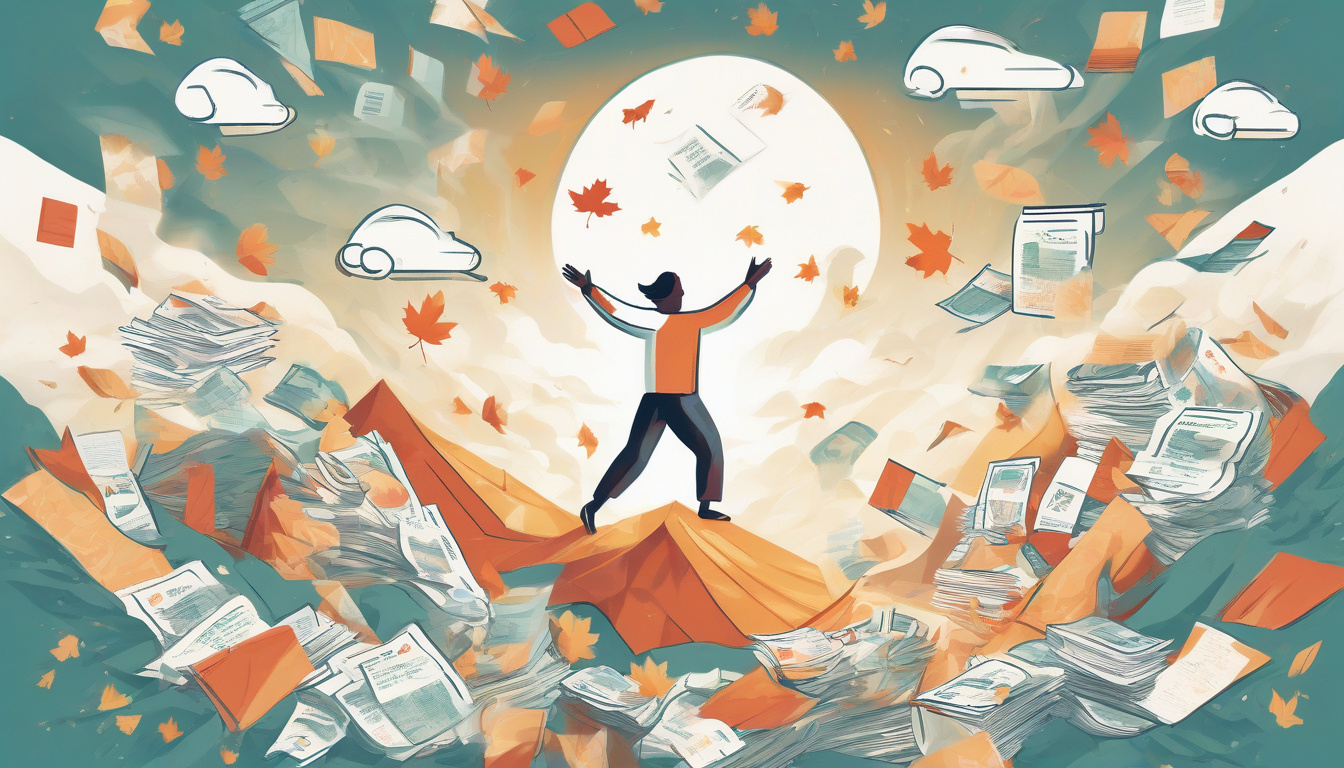Unlock Your Financial Freedom: Top Free Debt Relief Programs You Need to Know About
In today’s financial landscape, the burden of debt can weigh heavily on individuals and families, often leading to stress and anxiety. Fortunately, there are solutions available that can help you regain control of your financial situation. This article delves into free debt relief programs—a beacon of hope for those struggling with overwhelming debt. We will explore what these programs entail, the various types available, how to determine if you qualify, and the benefits and potential risks associated with them. Additionally, we’ll provide a comprehensive step-by-step guide to finding and applying for these programs, empowering you to take actionable steps towards achieving financial freedom. Whether you’re dealing with credit card debt, medical bills, or personal loans, discovering the right resources can make all the difference.

Key Takeaways
- Free debt relief programs can provide essential support to individuals struggling with debt.
- There are various types of free debt relief programs, including credit counseling and debt management plans.
- Eligibility for free debt relief programs typically depends on income and debt levels.
- Using free debt relief programs comes with benefits, but potential risks must also be considered.
- A systematic approach is necessary to find and successfully apply for free debt relief programs.
Understanding Debt Relief: What Are Free Debt Relief Programs?
Free debt relief programs are financial solutions designed to help individuals struggling with overwhelming debt manage their obligations and regain financial stability without incurring additional costs. These programs typically involve a variety of services such as credit counseling, debt management plans, and sometimes legal assistance to negotiate with creditors. Credit counseling agencies often provide free consultations to assess an individual’s financial situation and recommend personalized debt reduction strategies. For instance, through a debt management plan, a counselor might negotiate lower interest rates on unsecured debts and consolidate payments into a single monthly sum, making it easier for individuals to keep track of their finances. It’s crucial for consumers to research and select reputable agencies that are accredited and nonprofit to ensure they are genuinely free of charge, as some organizations may advertise free services but have hidden fees. Ultimately, these programs are aimed at providing individuals with tools and resources to help them escape the cycle of debt and move towards a healthier financial future.
Types of Free Debt Relief Programs Available
When exploring the landscape of free debt relief programs, it’s essential to understand the various options available to individuals seeking financial assistance. Debt management plans are one of the most common forms of relief. These plans allow consumers to consolidate their debts into a single monthly payment often with reduced interest rates. Non-profit credit counseling agencies typically offer these programs, producing tailored strategies based on an individual’s unique financial situation.
Another popular option is debt settlement programs. These programs involve negotiating with creditors to settle debts for less than what is owed, though this may have a significant impact on credit scores. Certain organizations specialize in helping consumers negotiate and settle their debts, which can provide substantial financial relief.
In addition to these, debt consolidation loans can be an option for those with good credit. Although often not ‘free’ in the traditional sense, some programs may offer low-interest consolidation loans with favorable terms that can lead to significant savings over time.
Educational resources are also an invaluable feature of many free debt relief programs. Many organizations provide workshops or free consultations designed to better educate individuals on managing their finances and debts. This holistic approach not only addresses current debts but aims to equip individuals with skills to prevent future financial struggles.
Finally, bankruptcy alternatives offer individuals a last resort for debt relief without the long-term consequences of a bankruptcy filing. Programs like Chapter 13 bankruptcy can allow individuals to keep their assets while creating a manageable repayment plan. However, it’s essential to consult with a financial advisor before pursuing this path.
With extensive support and diverse offerings available, individuals can take the first step towards financial freedom by exploring the free debt relief programs tailored to their needs.
‘The lack of money is the root of all evil.’ – Mark Twain

How to Qualify for Free Debt Relief Programs
Qualifying for free debt relief programs can vary depending on the organization offering the assistance, but there are common criteria that most programs will evaluate. First, potential candidates typically need to demonstrate financial hardship. This means providing documentation of income, expenses, and debts to show that you are struggling to meet your financial obligations. Many programs require a certain debt-to-income ratio or a specific amount of unsecured debt—generally credit card debt—before they consider you eligible.
Second, your credit score may be assessed, as some programs are designed to assist individuals with poor credit ratings or those who are on the brink of bankruptcy. Furthermore, it’s crucial to be proactive—most organizations prefer applicants who have not yet defaulted on their payments, showing that you are seeking help before the situation worsens.
Lastly, knowing the different types of debt can also play a role in qualification. Free debt relief programs often focus on unsecured debt, so any secured debts (like mortgages or car loans) may not qualify for these types of programs. By understanding these criteria and preparing the necessary documentation, individuals can improve their chances of qualifying for free debt relief programs and gain the financial assistance they need.
Benefits and Risks of Using Free Debt Relief Programs
When considering free debt relief programs, it’s essential to weigh both the benefits and the risks associated with these options. On the positive side, free debt relief programs can provide a much-needed lifeline for individuals overwhelmed by their financial obligations. They often offer services such as negotiating lower payments and reducing interest rates, which can result in substantial savings over time. Furthermore, these programs are typically designed to help people restore their credit status while regaining financial stability, allowing for a fresh start without the burden of overwhelming debt. Some organizations also provide free financial education, equipping participants with vital skills to manage their finances better in the future.
However, there are notable risks involved as well. Not all free debt relief programs are legitimate; some may be scams designed to exploit vulnerable individuals. Additionally, reliance on these programs can lead individuals to overlook the importance of responsible financial management, as they might become dependent on the services rather than developing skills to handle their debts independently. Moreover, it’s crucial to remember that enrolling in a free debt relief program can temporarily impact your credit score. If a program suggests stops payments to creditors as part of a debt negotiation plan, this can lead to missed payments and a subsequent decline in credit health. In summary, while free debt relief programs can offer significant advantages, they also come with potential pitfalls that individuals should carefully consider before proceeding.

Step-by-Step Guide to Finding and Applying for Free Debt Relief Programs
### Step-by-Step Guide to Finding and Applying for Free Debt Relief Programs
Finding a suitable debt relief program can be daunting, but with a clear step-by-step approach, the process becomes much easier. Here’s how you can navigate your way to free debt relief programs effectively.
#### Step 1: Assess Your Debt Situation
Before you can apply for any debt relief program, it’s crucial to have a thorough understanding of your financial situation. Begin by gathering all your financial statements, including credit card bills, loan statements, and any other significant debts. Calculate your total debt load and categorize it into secured (like mortgages) and unsecured (like credit cards and medical bills) debt. This initial assessment will help you identify which kinds of debt relief programs may be most beneficial for you.
#### Step 2: Research Available Free Debt Relief Programs
Once you know your financial landscape, it’s time to research your options. Utilize online resources such as debt relief websites, local non-profits, and government programs. Key free debt relief programs to consider include:
• Credit Counseling Services: Many non-profit organizations offer free or low-cost credit counseling to help you manage your debt.
• Debt Management Plans (DMP): These plans can lower interest rates and consolidate payments to one monthly amount.
• Debt Settlement Programs: While not free, some organizations offer assistance in negotiating lower settlements with creditors.
Make sure to check the legitimacy of the programs through reliable sources like the Better Business Bureau (BBB).
#### Step 3: Contact Non-Profit Organizations
Reach out to non-profit organizations that specialize in debt relief. Many of these organizations offer free initial consultations to assess your eligibility for various programs. Ensure you ask about any potential fees, even if they claim to be free. Questions to consider include:
• What services do you offer, and are there any upfront fees?
• How long does the program typically last?
• What are the risks associated with this program?
#### Step 4: Gather Necessary Documentation
To apply for most programs, you’ll need to provide specific documentation. This may include your income statements, a list of debts and creditors, and any other financial documents. Having these documents prepared will streamline the application process.
#### Step 5: Apply for the Program
With all your information in order, you can now submit applications. Be sure to fill out any forms completely to prevent delays. Once you’ve submitted your application, be patient, but remain proactive! Keep a record of your communications and follow up if you haven’t heard back in a reasonable timeframe.
#### Step 6: Follow Through with the Program
If accepted, be sure to follow the program guidelines diligently. Attend any required counseling sessions, stay current on your payments, and communicate regularly with your debt relief advisor. Tracking your progress can help maintain motivation and ensure you’re on the road to financial recovery.
#### Step 7: Monitor Your Credit Report
After successfully navigating a debt relief program, regularly check your credit report to monitor changes and confirm that debts are marked as settled or paid. This can help you understand your current financial standing and guide your next steps for rebuilding credit.
Frequently Asked Questions
What are free debt relief programs?
Free debt relief programs are services or resources available to individuals seeking assistance in managing or eliminating their debt without having to pay fees. These programs can include credit counseling, debt management plans, financial education workshops, and other support services.
What types of free debt relief programs are available?
Common types of free debt relief programs include credit counseling services, debt management plans, nonprofit financial education programs, government resources, and community assistance programs that provide guidance on budgeting and debt reduction.
How can I qualify for free debt relief programs?
To qualify for free debt relief programs, individuals typically need to demonstrate financial hardship or a specific level of debt. Many programs will require documentation of income, expenses, and debts, as well as participation in a financial assessment or consultation.
What are the benefits and risks of using free debt relief programs?
Benefits of free debt relief programs include access to expert advice, personalized debt management plans, and the potential for reduced stress and improved financial literacy. Risks may involve reliance on inaccurate information, potential scams, or ineffective programs, especially those that claim to eliminate debt quickly.
How do I find and apply for free debt relief programs?
To find and apply for free debt relief programs, you can start by researching nonprofit organizations, visiting social service agencies, and checking with your local government or community centers. Most programs will have an application process that may involve an initial consultation, and it’s important to ask about any potential fees before proceeding.
